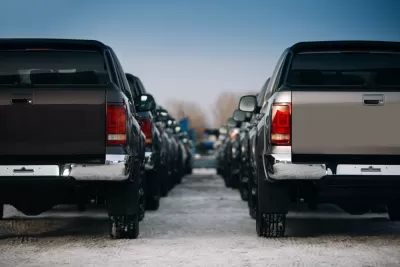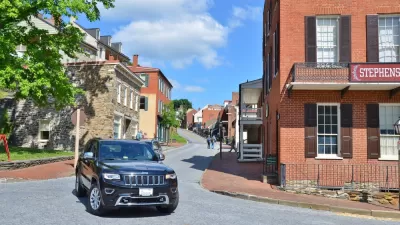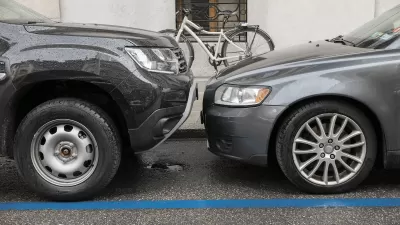The increase in miles driven by light trucks and other 'megacars' could have contributed to the rise in traffic deaths, despite an overall reduction in VMT.

"According to estimates from the Federal Highway Administration, vehicles classified as “light truck, long wheelbase” — a category which includes many of America’s most popular pick-up trucks, or any car with at least 121 inches between its axles — were driven about 1.5 billion miles more during the year that much of the country fell under quarantine orders than they were the year before, an increase of about one percent." Smaller cars, by contrast, traveled 16 percent fewer miles in 2020 than in 2019. The implications for public health are severe, writes Kea Wilson for Streetsblog.
The rising popularity of both SUVs and light trucks has long been recognized as a significant factor in the nation’s rising pedestrian death rate, which surged 21 percent between 2019 and 2020, the largest annual increase ever recorded by federal agencies; light trucks of all lengths are two to three times more likely to kill a walker in the event of a crash, because of their weight, height, and front-end design.
The article outlines a variety of possible reasons for the discrepancy, including the use of bigger vehicles by workers who can't telecommute and the correlation of large vehicles with right-leaning voters. But Wilson argues "Whatever the reason why so many megacar drivers took to the road in 2020, there’s no doubt that those motorists posed an outsized danger to vulnerable road users — and that something must be done about it."
FULL STORY: Feds: Megacar Owners Actually Drove More In 2020 Than 2019

Alabama: Trump Terminates Settlements for Black Communities Harmed By Raw Sewage
Trump deemed the landmark civil rights agreement “illegal DEI and environmental justice policy.”

Study: Maui’s Plan to Convert Vacation Rentals to Long-Term Housing Could Cause Nearly $1 Billion Economic Loss
The plan would reduce visitor accommodation by 25% resulting in 1,900 jobs lost.

Planetizen Federal Action Tracker
A weekly monitor of how Trump’s orders and actions are impacting planners and planning in America.

Waymo Gets Permission to Map SF’s Market Street
If allowed to operate on the traffic-restricted street, Waymo’s autonomous taxis would have a leg up over ride-hailing competitors — and counter the city’s efforts to grow bike and pedestrian on the thoroughfare.

Parklet Symposium Highlights the Success of Shared Spaces
Parklets got a boost during the Covid-19 pandemic, when the concept was translated to outdoor dining programs that offered restaurants a lifeline during the shutdown.

Federal Homelessness Agency Places Entire Staff on Leave
The U.S. Interagency Council on Homelessness is the only federal agency dedicated to preventing and ending homelessness.
Urban Design for Planners 1: Software Tools
This six-course series explores essential urban design concepts using open source software and equips planners with the tools they need to participate fully in the urban design process.
Planning for Universal Design
Learn the tools for implementing Universal Design in planning regulations.
Caltrans
Smith Gee Studio
Institute for Housing and Urban Development Studies (IHS)
City of Grandview
Harvard GSD Executive Education
Toledo-Lucas County Plan Commissions
Salt Lake City
NYU Wagner Graduate School of Public Service





























